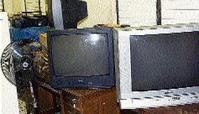
The best appliances might cost you more than the cheapest brands, but in the long run they provide the best value for your hard-earned dollar.
Most energy-efficient appliances cost more initially, but they'll save you money over time - not only that, buying the best brands means that you can expect to keep most major appliances between 10 and 20 years.
Your monthly utility bills will dip if, for example, you were to purchase a washing machine that is efficient. It will use a lot less water and can reduce your water bill.
Not only should the appliances be energy-efficient, ensure that the products you are buying suit your needs. Oversized air conditioners, water heaters and refrigerators waste energy and money. In many cases, they also don't perform as well if you cannot use them to full capacity.
The experts advise that you should, whenever possible, choose appliances that run on natural gas rather than electricity.
Choosing a refrigerator

Today's most popular style of refrigerator offers 20 cubic feet of storage; adjustable glass shelves meat keeper with temperature control; vegetable crisper with humidity control; ice-maker and door bins.
Next in cost and convenience are models with the freezer located below the refrigerator (a very good option for people with bad backs) and 22-cubic foot capacity. Side-by-side designs and water- and ice-dispensing 'convenience centres' built right into the door add further appeal.
Built-in refrigerator-freezers and commercial, stainless-steel models are top-of-the-line choices for luxurious looks and high-volume storage.
In all cooling sections, look for pull-out, roll-out bins and baskets that make it easy to see everything without having to dig around.
How much TV?
Planning to invest in high definition, digital television? Minimum viewing distance should be three times the height of a widescreen set. The screen should be large enough to dominate your field of vision and immerse you in a story or event - but not large enough for pixels or scan lines to be visible.
The smallest and least expensive TVs are called direct view. In other words, they have a single picture tube. Direct-view HDTVs range in size from 27 to 36 inches. Direct-view HDTVs may be either widescreen or non-widescreen.
Widescreen sets are better for viewing contemporary movies and the increasing number of widescreen sports telecasts. It always helps to research what you need before you go shopping. But remember - you most certainly will get what you pay for.
- Sources: How stuffworks.com and reviews digital trends.com.

